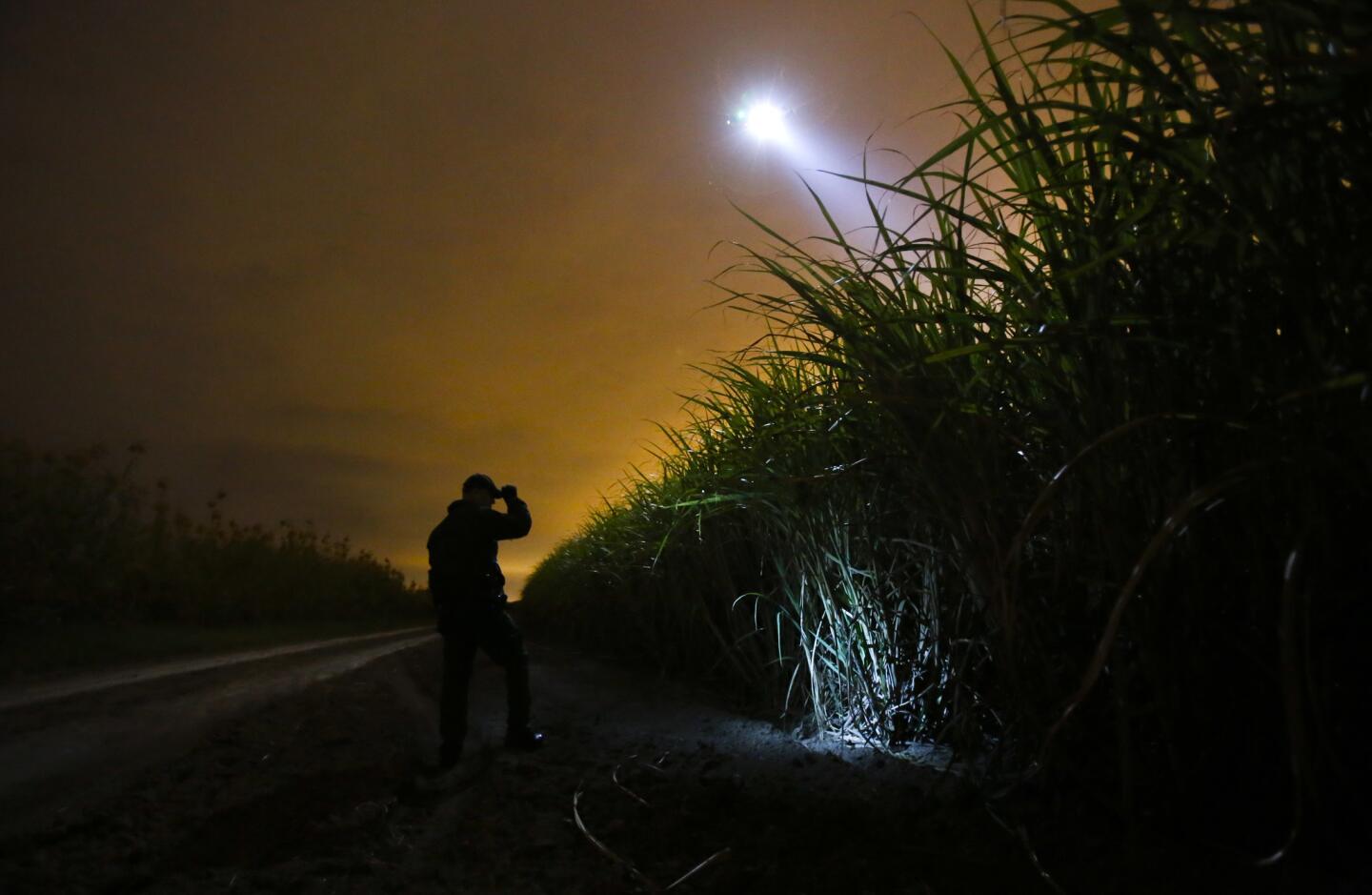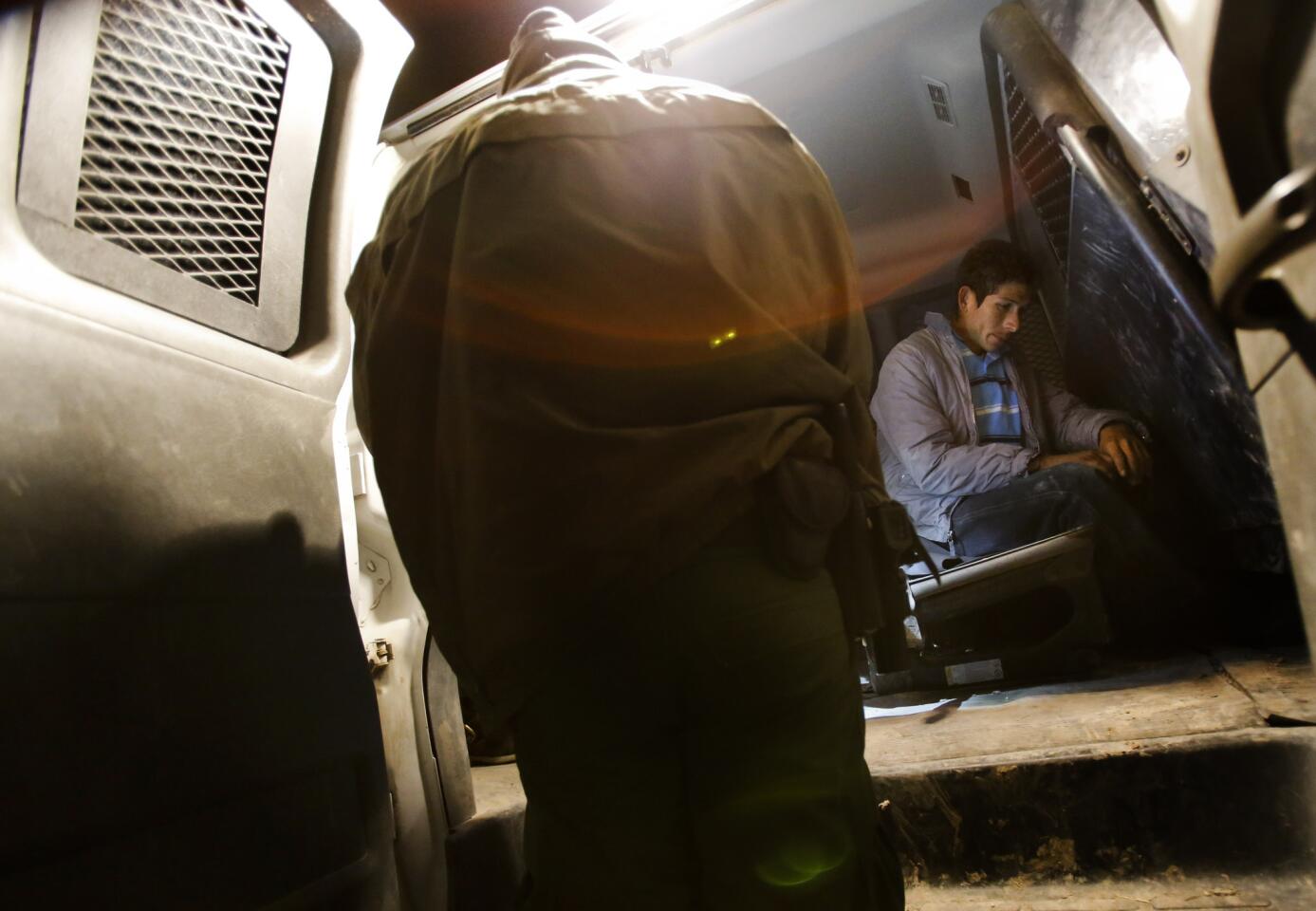
A young immigrant from Guatemala is detained by a Border Patrol agent just north of the Mexico border near McAllen, Texas.
(Michael Robinson Chavez / Los Angeles Times)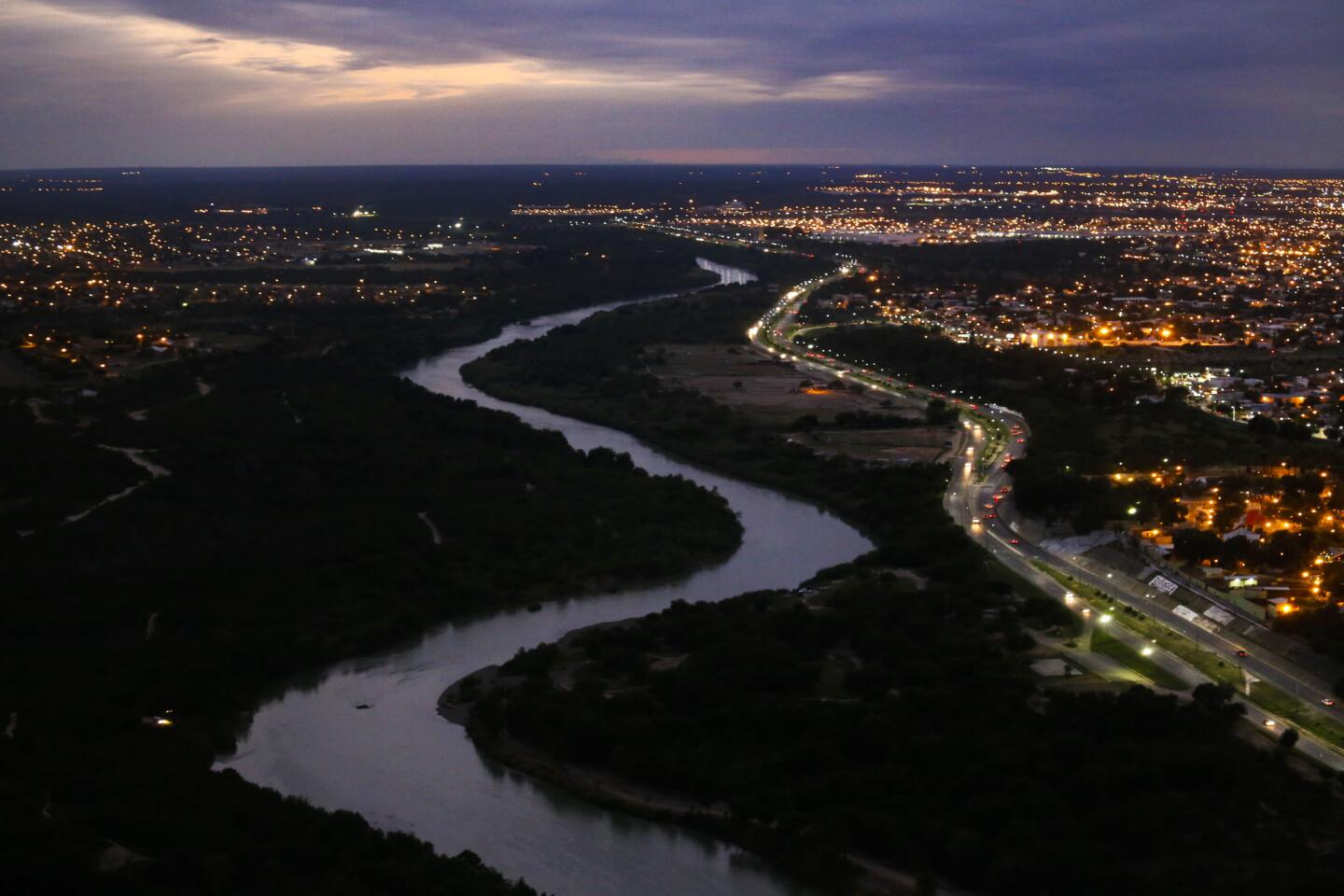
The Rio Grande separates Nuevo Laredo, Mexico, right, and Laredo, Texas.
(Michael Robinson Chavez / Los Angeles Times)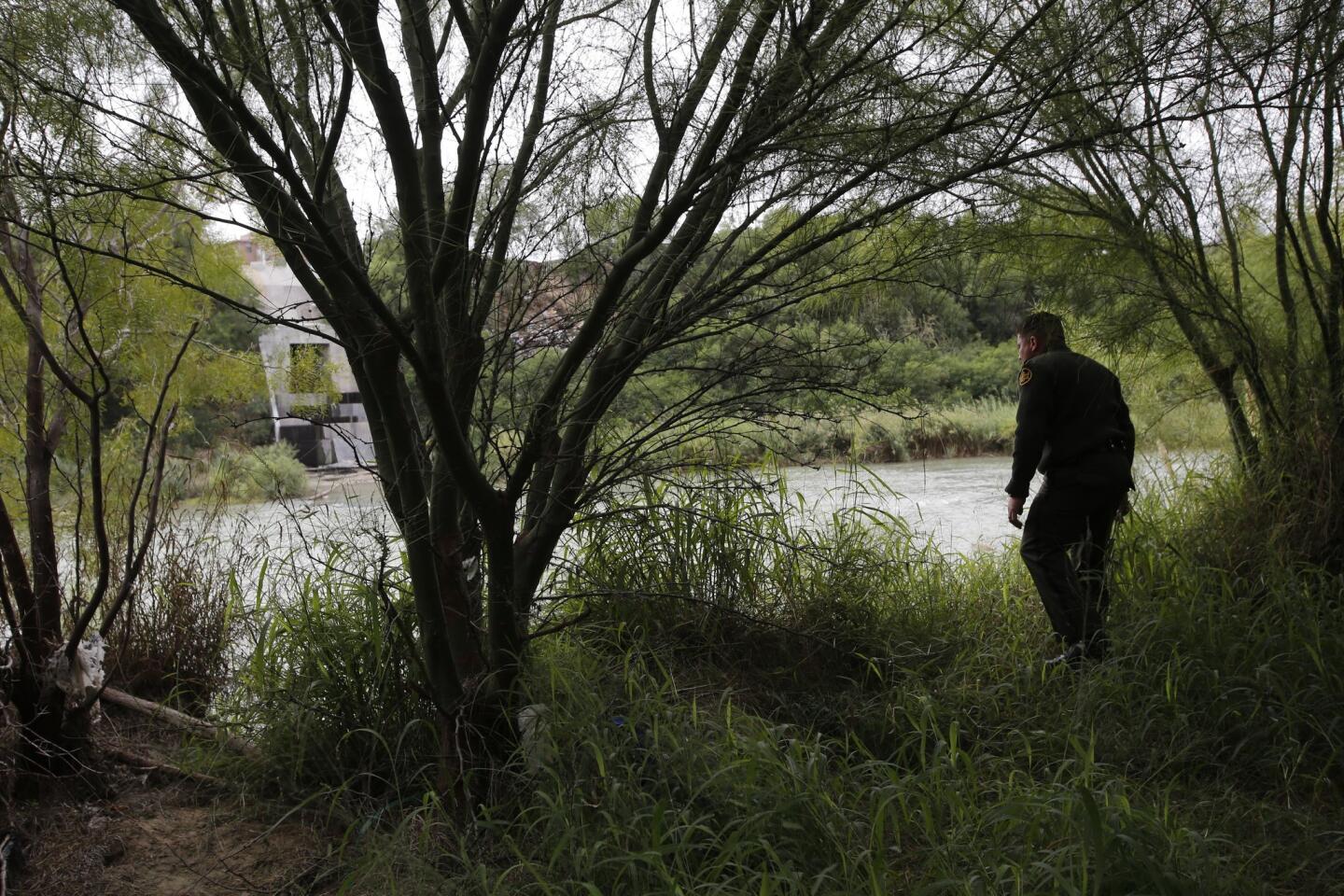
A border agent looks across the Rio Grande near Laredo, Texas.
(Michael Robinson Chavez / Los Angeles Times)Advertisement
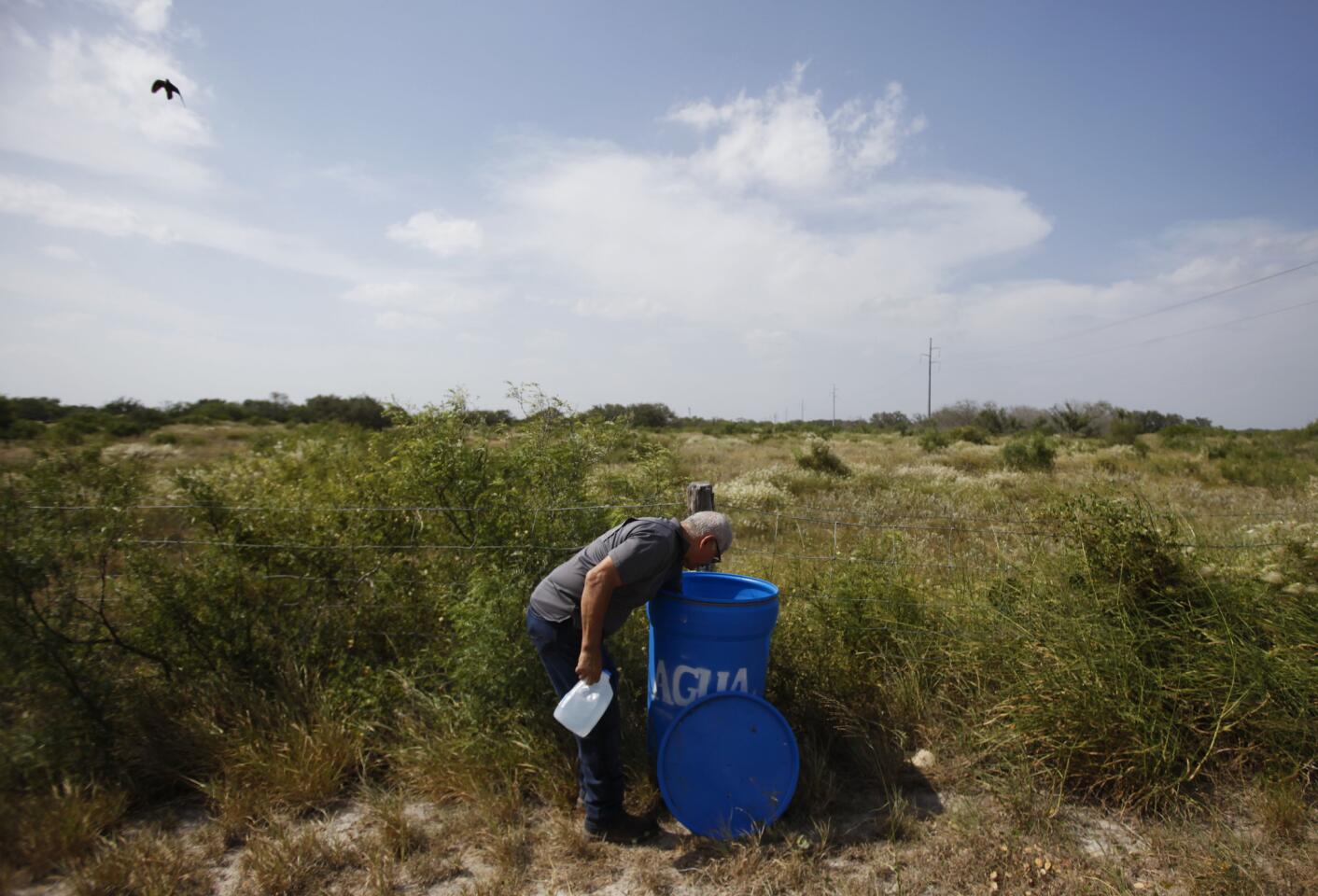
Eduardo Canales prepares a water dispenser for undocumented immigrants walking across the scorching sandy scrublands of southern Texas. Canales, an organizer with the South Texas Human Rights Center, has arrangements with private ranchers to provide water and, in some cases, recover the bodies of immigrants who die en route.
(Michael Robinson Chavez / Los Angeles Times)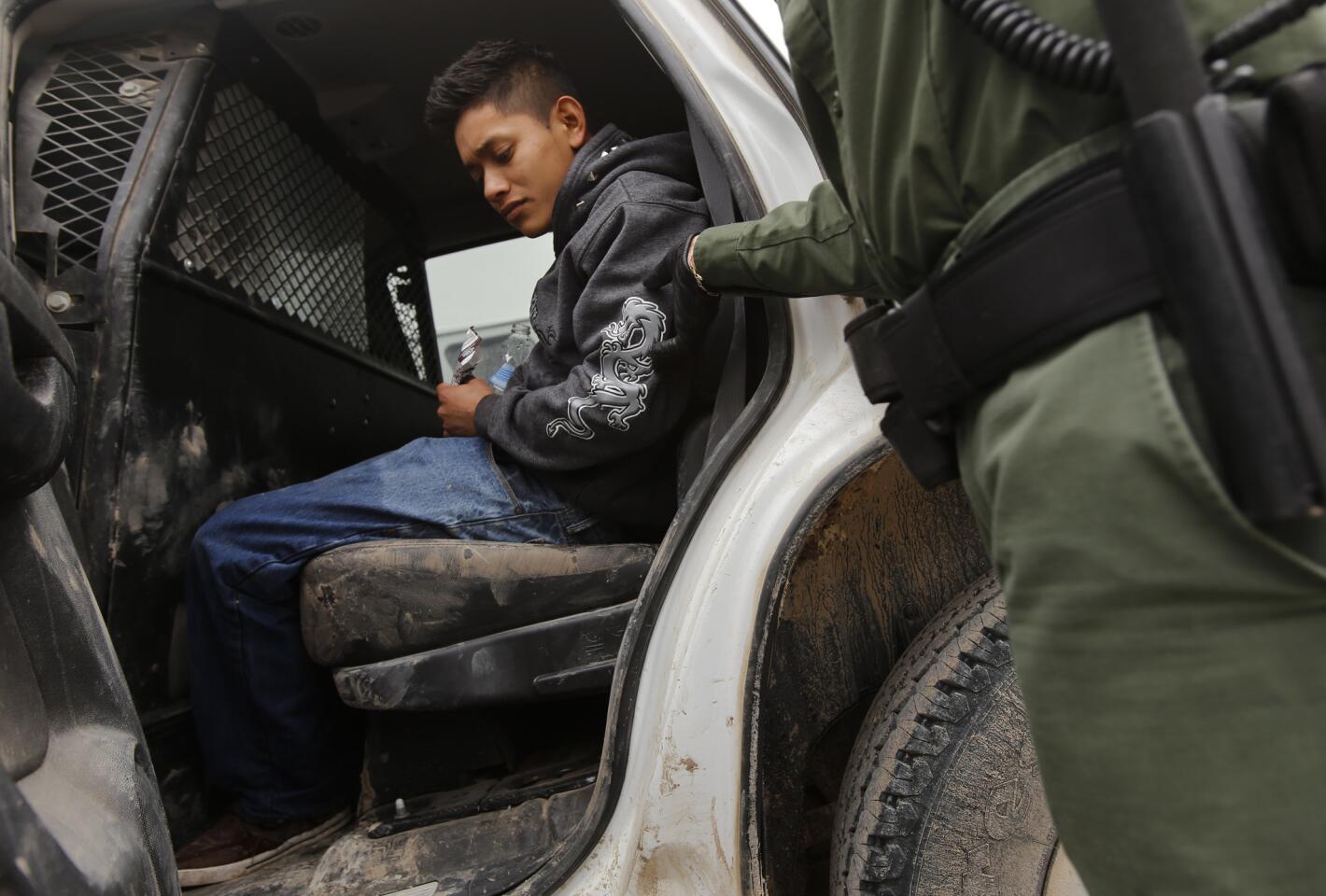
A 17-year-old Guatemalan is removed from a Border Patrol vehicle south of McAllen, Texas. Agents found him freezing along the Rio Grande after he had fallen off the raft carrying him across the river the night before.
(Michael Robinson Chavez / Los Angeles Times)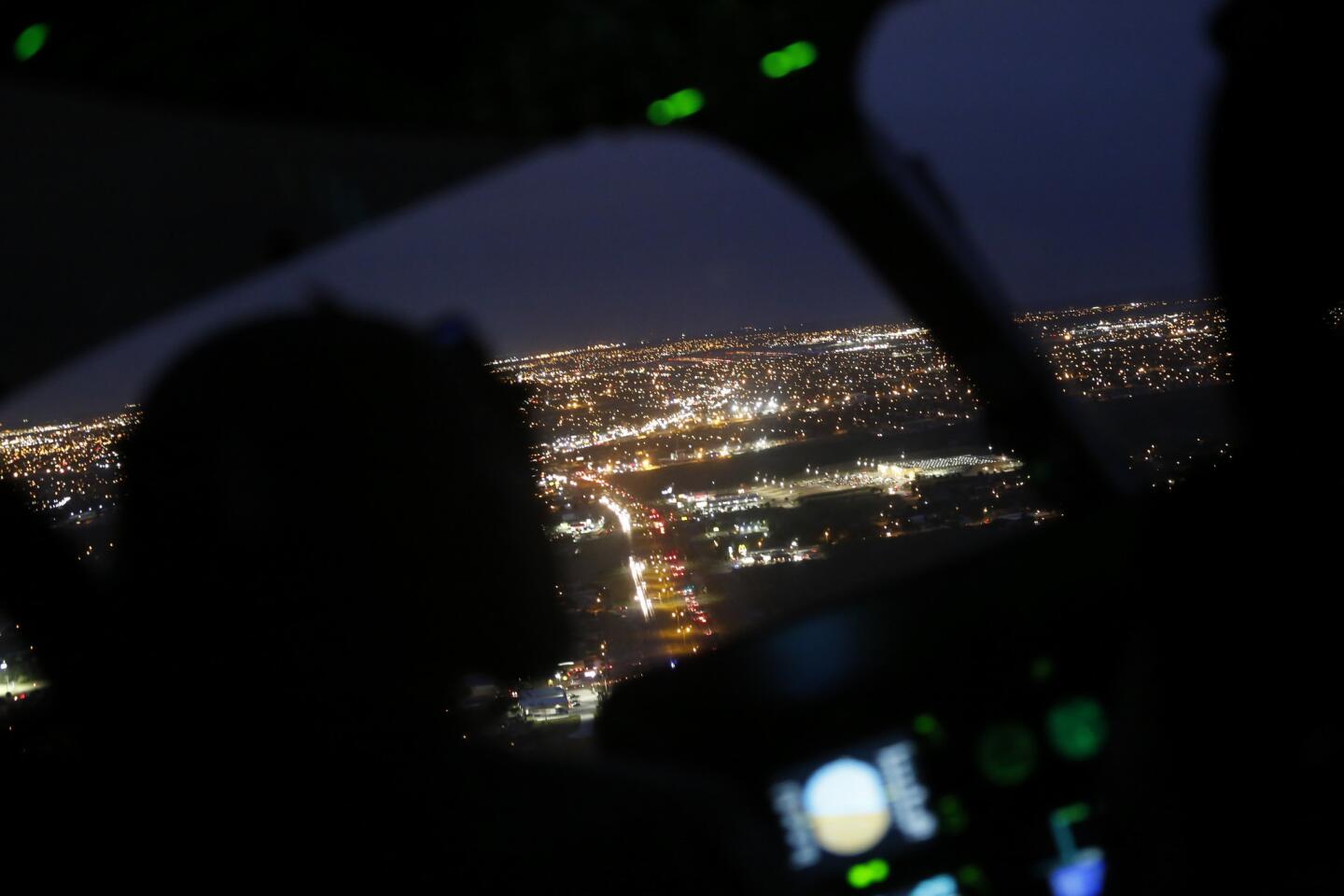
A helicopter used by the Texas National Guard does a flyover of Laredo, Texas.
(Michael Robinson Chavez / Los Angeles Times)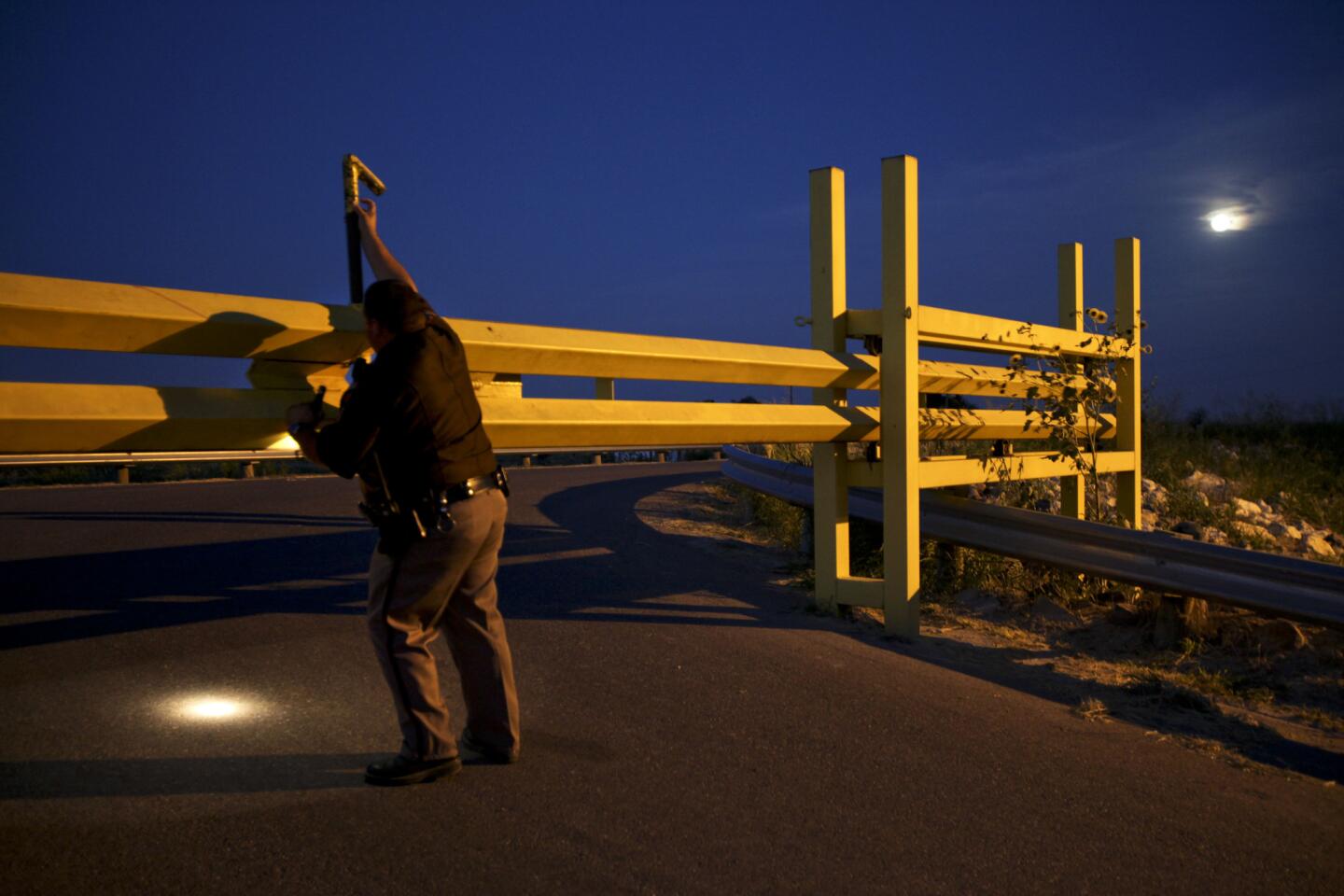
Deputy Ruben Salinas of the Hidalgo County Constable Department, closes the gate to Anzalduas Park outside McAllen, Texas. The park is a popular crossing point for illegals who walk or boat across the Rio Grande.
(Michael Robinson Chavez / Los Angeles Times)Advertisement
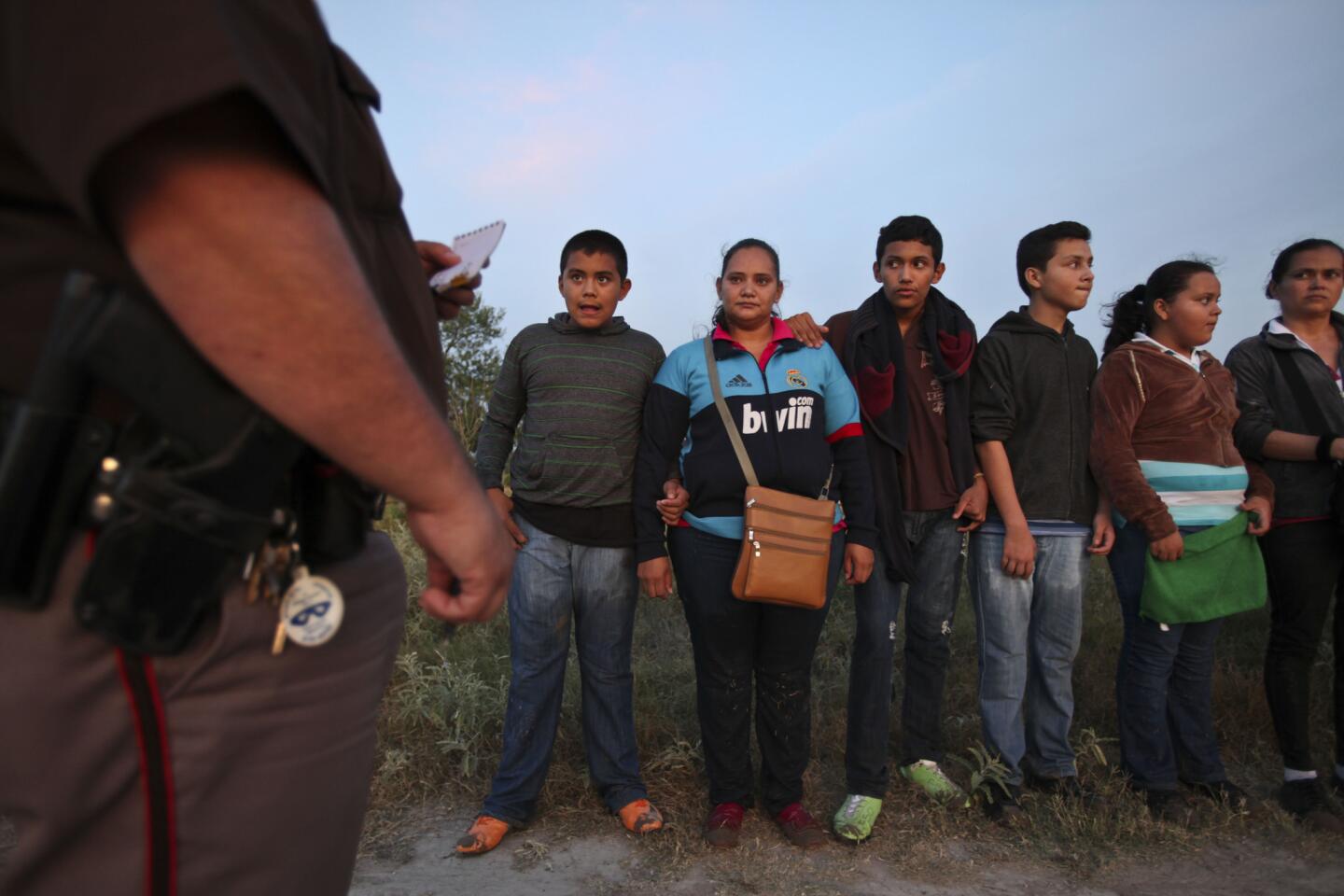
Deputy Ruben Salinas, left, of the Hidalgo County Constable Department, questions a group of 16 Guatemalans after they crossed the Rio Grande near Anzalduas Park outside McAllen, Texas. The group spent three weeks traveling across Mexico to get to the U.S.
(Michael Robinson Chavez / Los Angeles Times)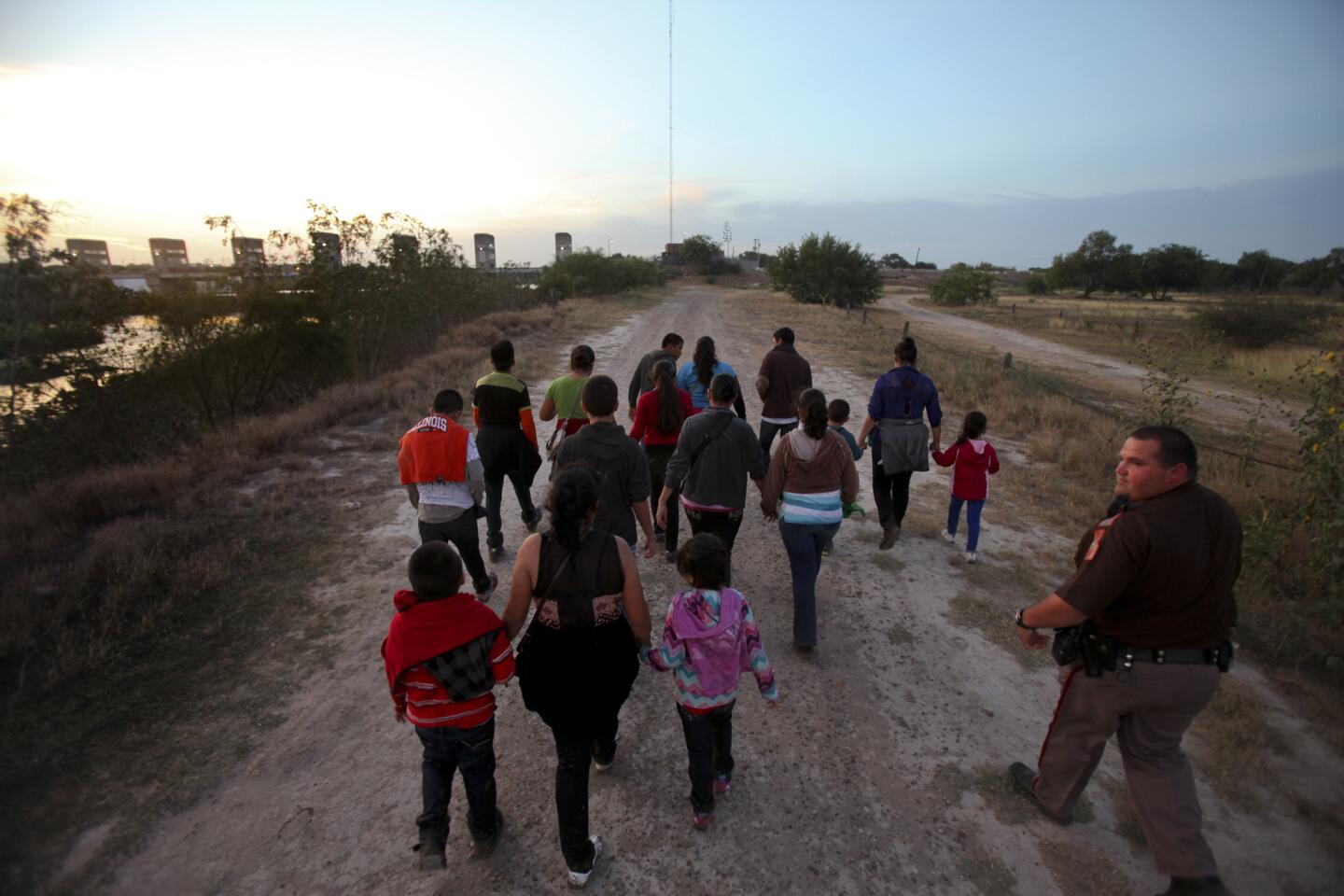
Deputy Ruben Salinas, lower right, of the Hidalgo County Constable Department, escorts a group of 16 Guatemalans to Border Patrol officials.
(Michael Robinson Chavez / Los Angeles Times)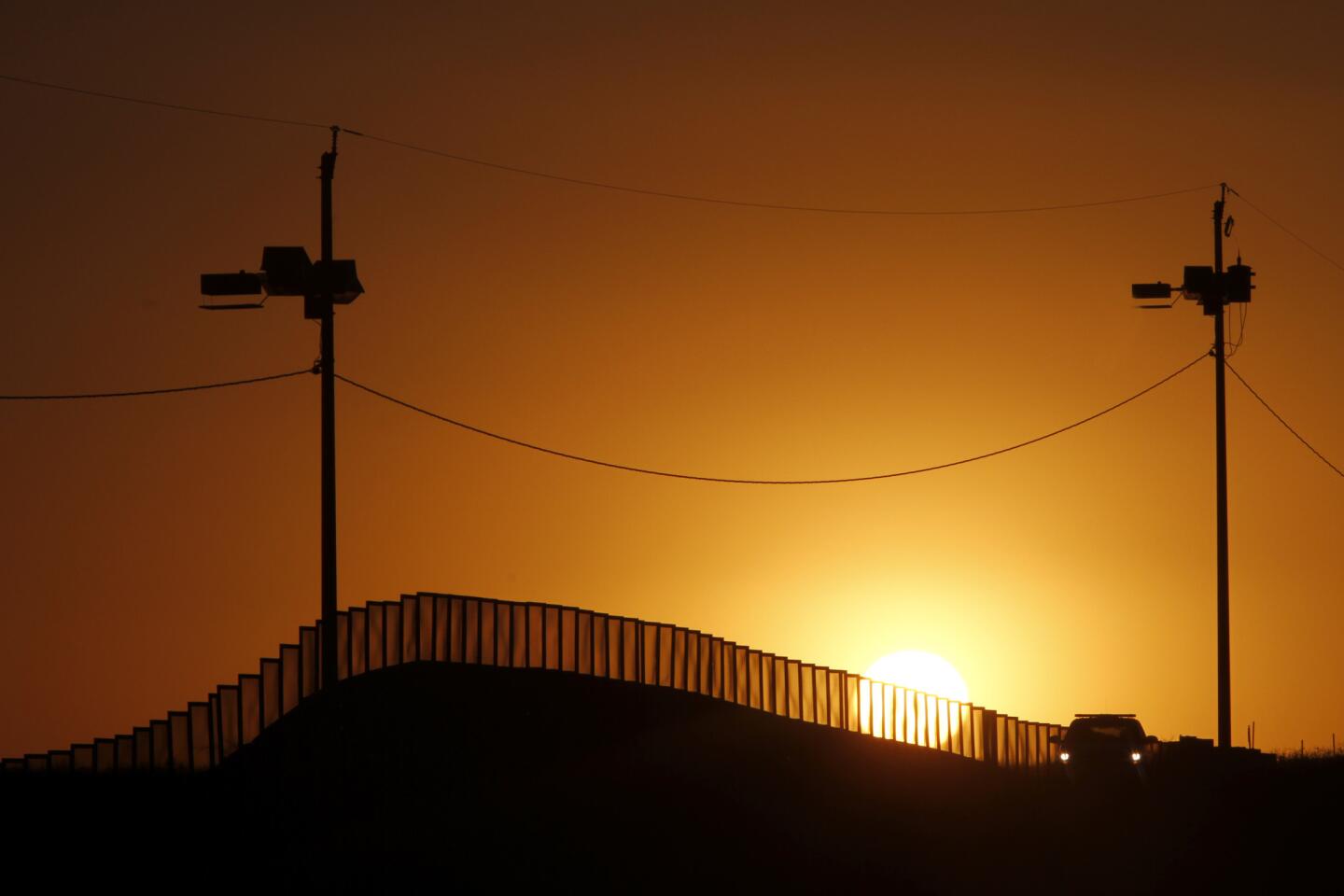
The sun sets at the U.S.-Mexico border fence in Naco, Ariz., where a Border Patrol agent in his vehicle keeps an eye on things. Pole-mounted floodlights illuminate the fence at night.
(Don Bartletti / Los Angeles Times)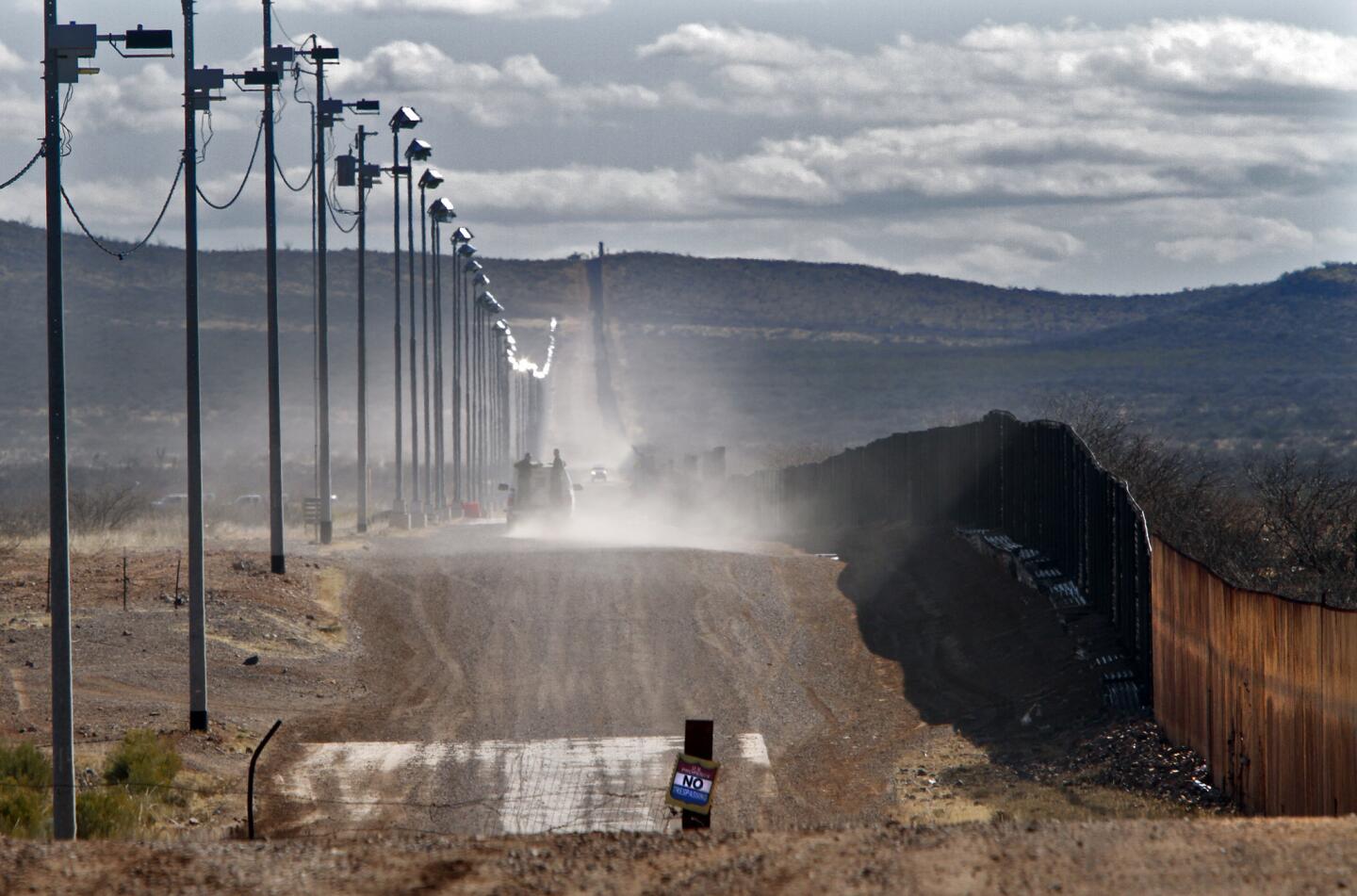
U.S. Border Patrol agents ride in the tailgate of a truck as it moves along the U.S.-Mexico border fence in Naco, Ariz. The dirt road is named International Highway, but the posted sign reads “U.S. Property No Trespassing.”
(Don Bartletti / Los Angeles Times)Advertisement
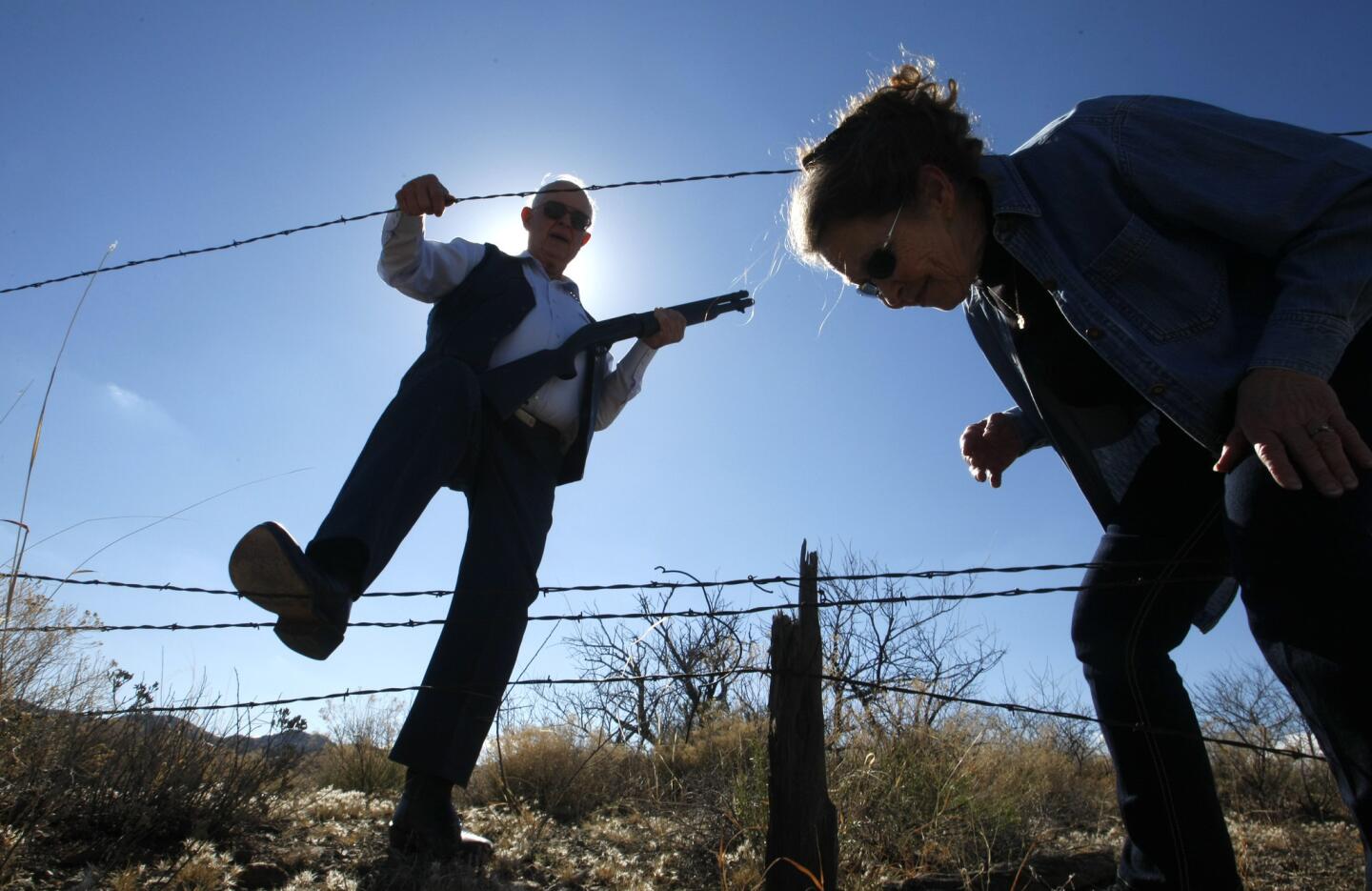
Armed with a rifle, Jim Chilton and his wife, Sue, squeeze through a hole in a fence on their 50,000-acre cattle ranch in Arivaca, Ariz. Chilton thinks immigrants crossing into the U.S. illegally and Mexican drug smugglers probably broke the fence post as they moved through his property.
(Don Bartletti / Los Angeles Times)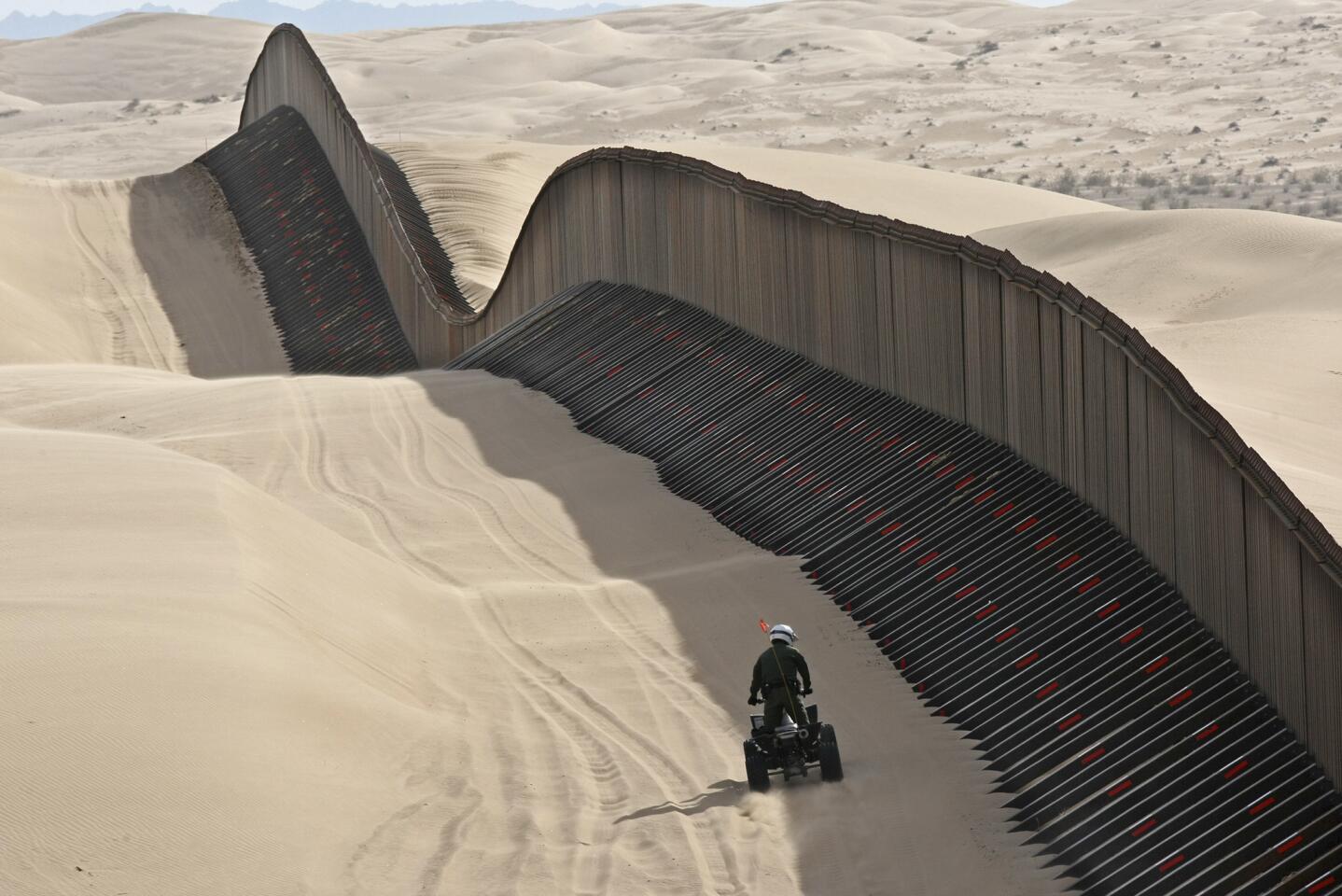
A U.S. Border Patrol agent rides an ATV along the “floating fence” that sits atop the Imperial Sand Dunes in southeastern California. Angled steel supports on either side give the fence stability atop the wind-blown sand.
(Don Bartletti / Los Angeles Times)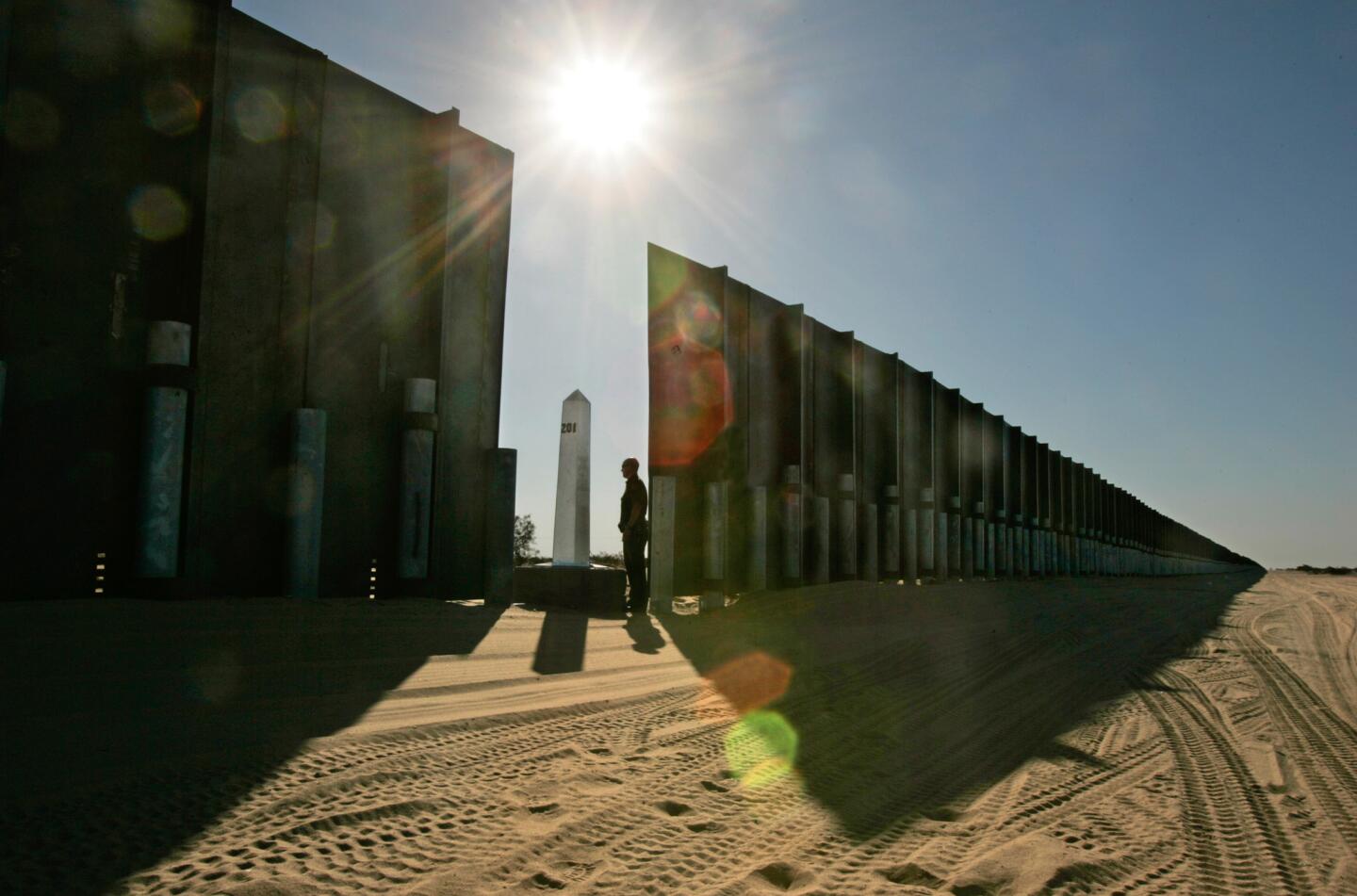
The desert sand east of San Luis, Ariz., is imprinted with border patrol tracks. A gap in the solid steel barrier leaves room for an official international boundary marker.
(Don Bartletti / Los Angeles Times)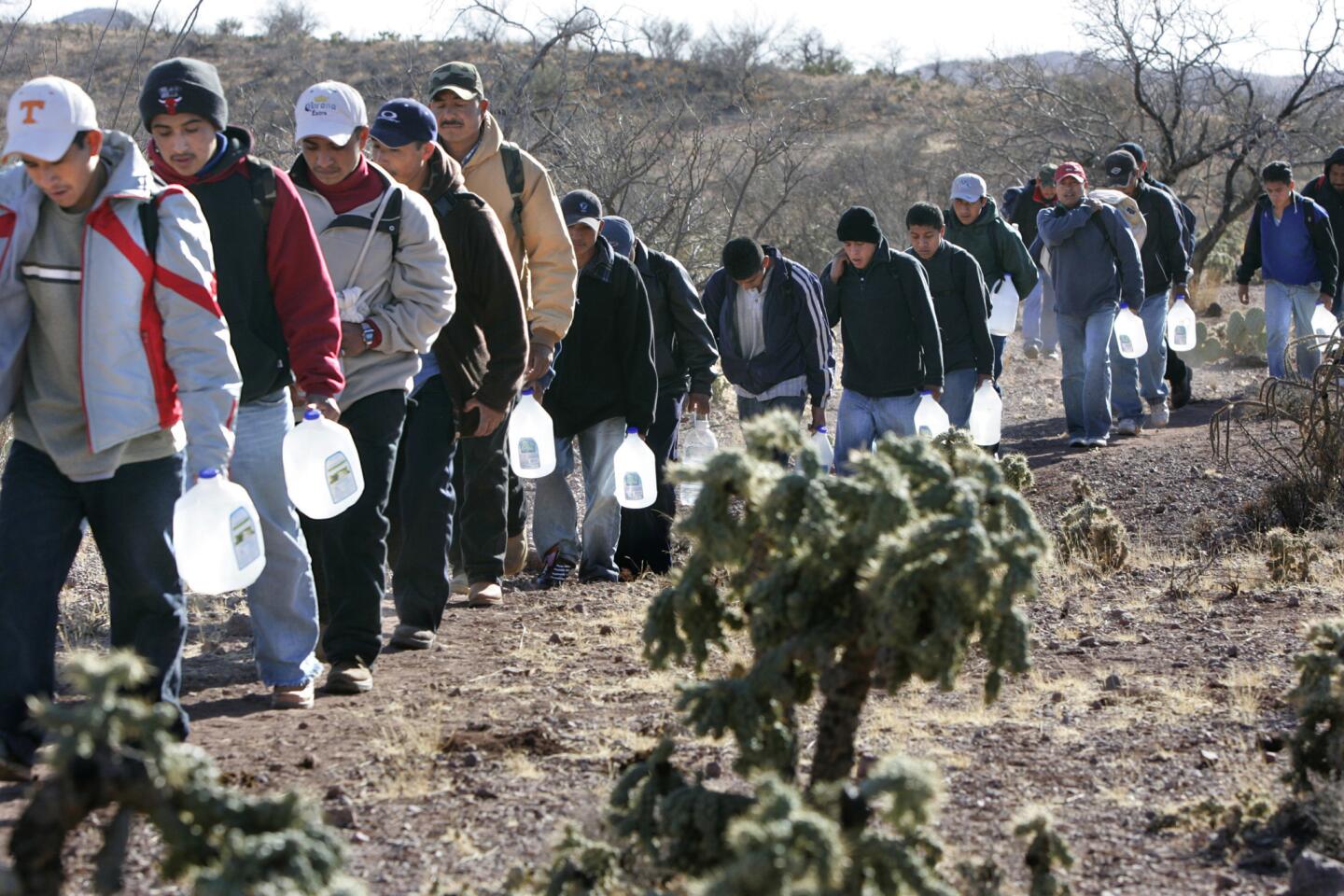
Lugging jugs of water, migrants thread their way along footpaths leading to the U.S. border. Backpacks hold canned food and snacks enough for a three or four days’ walk.
(Don Bartletti / Los Angeles Times)Advertisement
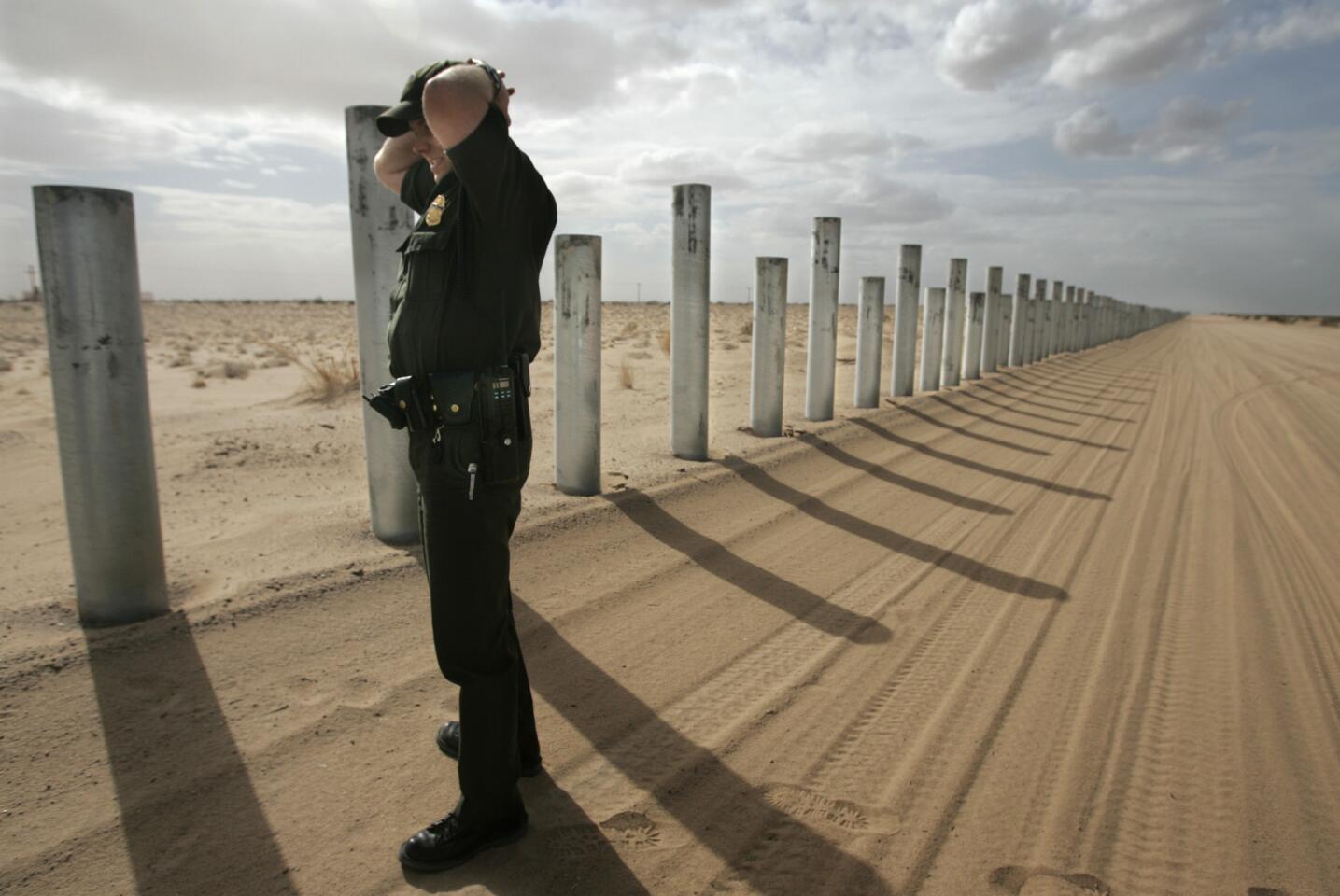
Senior Border Patrol Agent Chris Van Wagenen stands at the recently constructed bollard fence on the U.S.-Mexico border south of Yuma, Ariz.
(Don Bartletti / Los Angeles Times)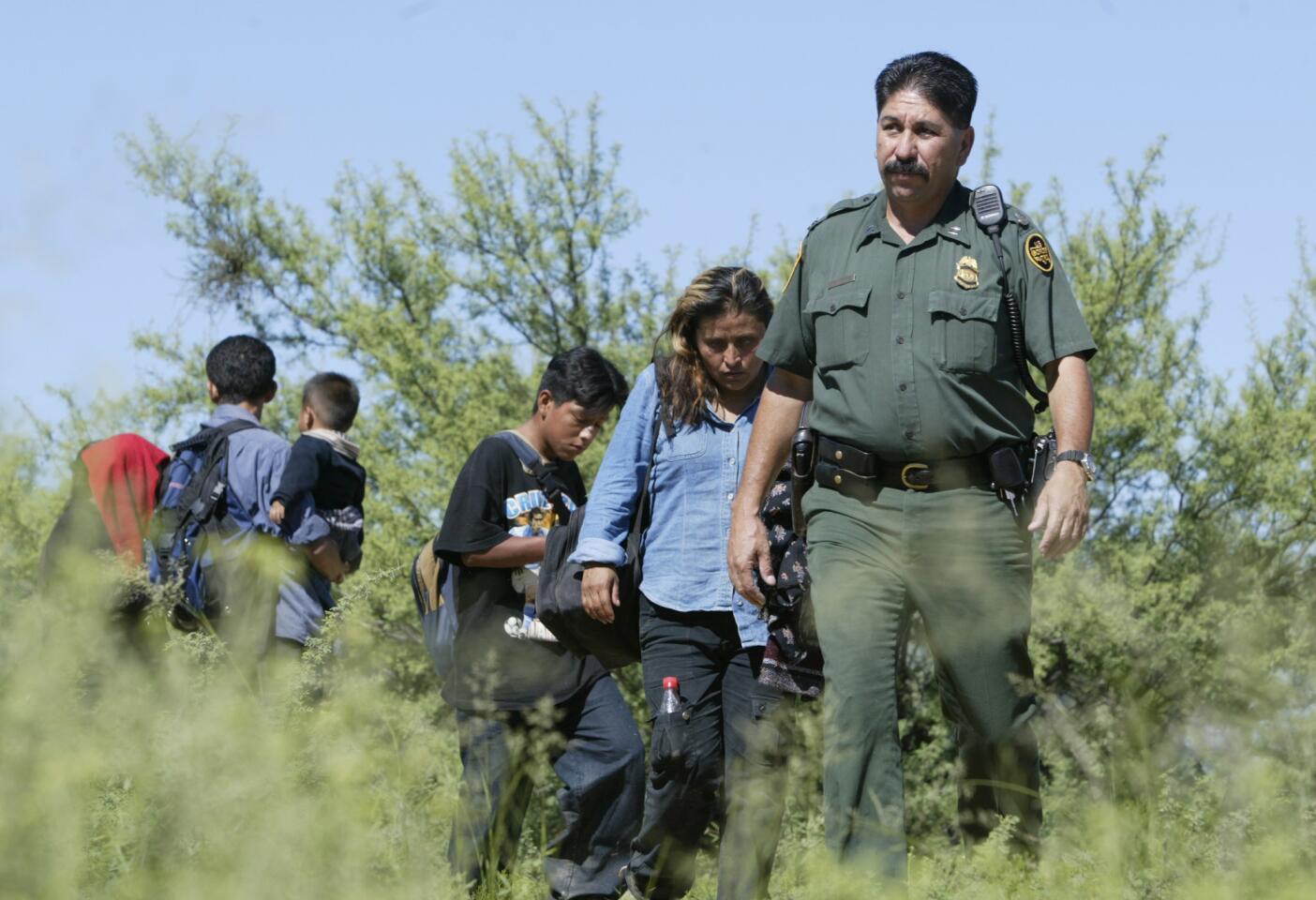
U.S. Border Patrol agent J.D. Martinez leads a migrant family out of the desert near Three Points, Ariz., south of Tucson.
(Robert Gauthier / Los Angeles Times)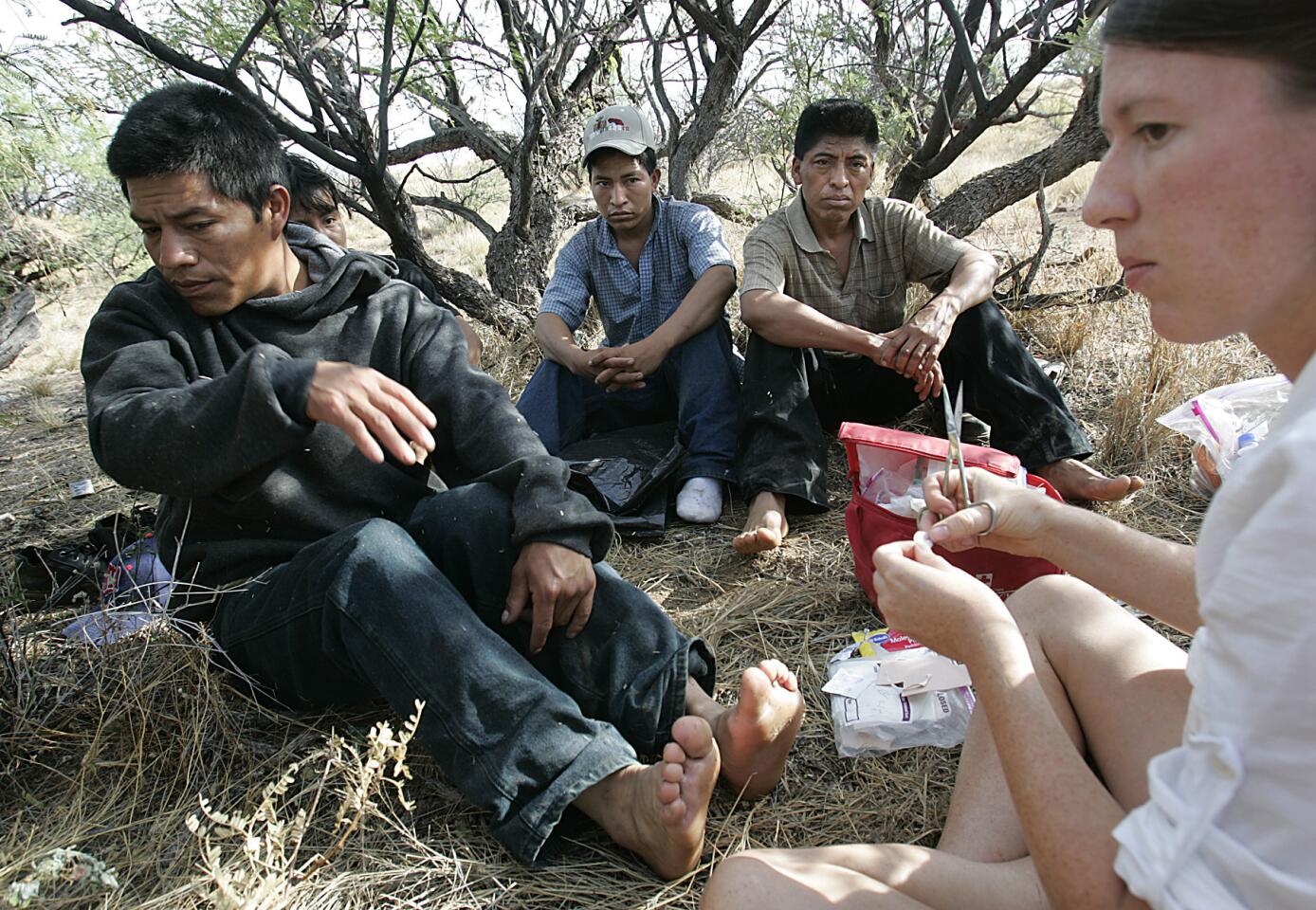
Amber Stenson of “No More Deaths,” a group of volunteers who provide water, food and first aid to migrants crossing through the southern Arizona desert from Mexico, treats the blistered feet of men who were camped in the brush near the town of Aravaca.
(Robert Gauthier / Los Angeles Times)